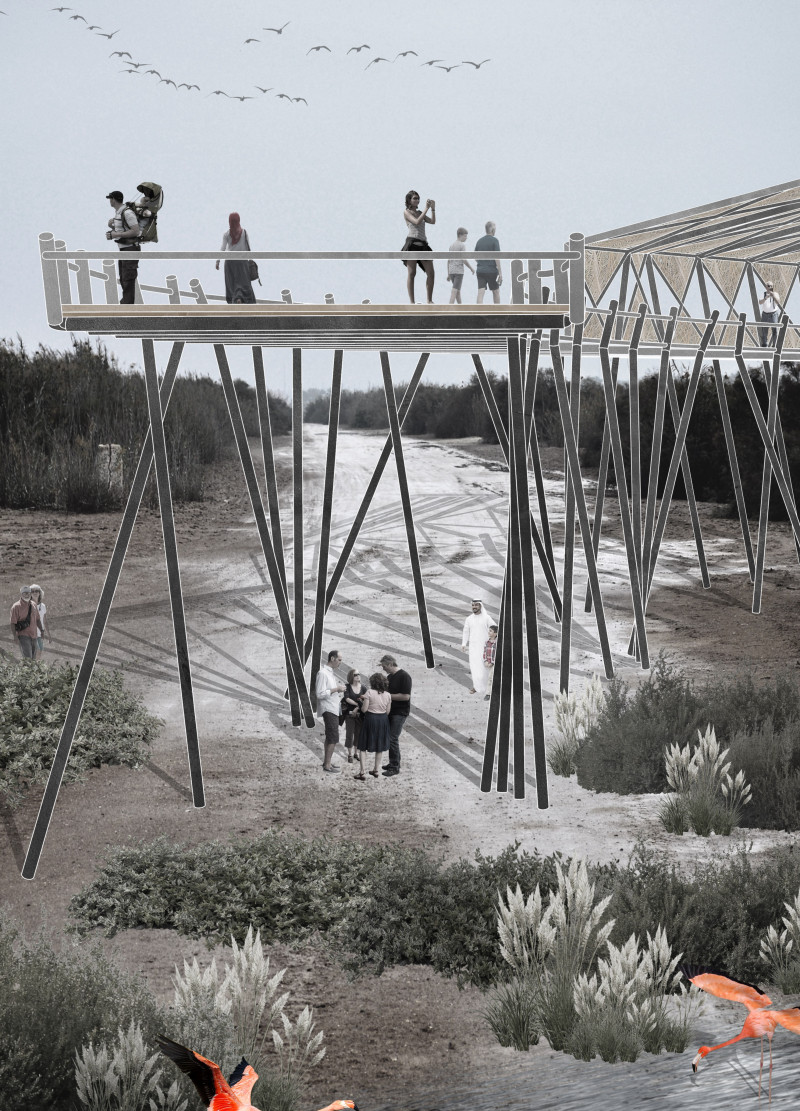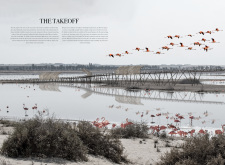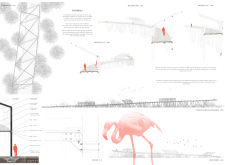5 key facts about this project
The Takeoff is located within a Ramsar site and aims to improve the visitor experience of the surrounding wetland area. It functions as both a walkway and a viewing platform, allowing individuals to connect with the landscape while minimizing harm to the local ecology. The design takes its inspiration from the flight patterns of flamingos, creating a strong connection between earth and sky.
Structural Design
The project features an elevated boardwalk supported by tubular steel columns. This arrangement allows the walkway to hover above the ground, limiting direct contact with the delicate ecosystem below. The columns are thoughtfully placed to mimic the shape of flamingos during flight, highlighting the project's conceptual ties to nature and emphasizing its environmental awareness.
Observation Points
Along the boardwalk, three observation platforms are integrated to provide visitors with places to pause and take in the scenery. Each platform includes shaded areas that ensure comfort in hotter weather conditions. These vantage points are designed to focus attention on the diverse wildlife of the reserve, enhancing the overall experience of those who come to observe.
Pathway Geometry
The pathway incorporates a flowing geometry, defined by inward curving shapes formed from the intersection of two circles. This design invites exploration and adds to the movement along the walkway. As visitors progress, they encounter new views of the landscape, which keeps the experience engaging and varied. The varying widths of the path also create opportunities for both solitude and gathering, depending on the visitor's preference.
Materials and Finish
The flooring is made from recycled wood, aligning with ecological considerations while also promising durability. The structure is anchored in reinforced concrete foundations, which provide stability within the sandy environment typical of the site. These material choices reflect a commitment to sustainability and ensure that the design will endure over time.
The final observation point offers visitors a wide view of the reserve, where they can see Greater Flamingos in their natural habitat, reinforcing the project's intention to bridge the gap between architecture and nature.






















































